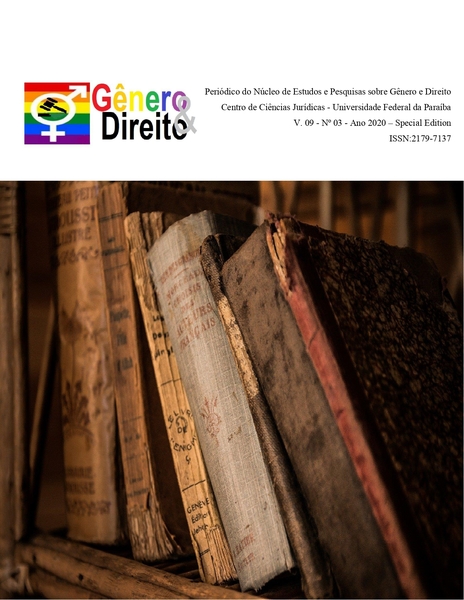DEVELOPING AND APPLYING ROBOTIC TECHNOLOGIES AND ARTIFICIAL INTELLIGENCE SYSTEMS (USING AUTONOMOUS UNMANNED UNDERWATER VEHICLES)
Palavras-chave:
autonomous underwater vehicles (AUV), deontological codes, national legislation, artificial intelligence, international law, legal regulation, robotic technologies, ethical standards.Resumo
The paper includes systematization of the main problems and contradictions in the development of modern national legislation and international legal order in the context of the processes of integrating robotic technologies and devices based on the artificial intelligence into the social life of society. The article discusses doctrinal, legal, ethical and socio-moral issues in the regulation of the development and application of artificial intelligence systems, robotic technologies, autonomous devices, etc. The authors substantiate the need to formulate a legal concept and the ethical standards for the regulation of these technologies and systems, propose directions, methods and forms for the development of a comprehensive program for the regulatory mediation of the development and integration of innovative processes in the social life of people. It is noted that the rapid development of robotic technologies and artificial intelligence systems creates an acute need of modernity - the legal regulation of relations associated with the application of RT and AI. At the same time, it is shown that a state that develops the effective legal models and legislative bases for regulation in this field will be able to win in an acute competitive struggle, to formulate the international legal standards and models for other countries.
Downloads
Referências
2. Ageev, M. D., Kiselev, L. V., & Matveenko, Yu. V. Autonomous Underwater Robots. Systems and Technologies. Ed. by the Academician M.D. Ageev. М.: Nauka. 2005.
3. Ageev, M. D., Naumova, L. A., & Hilarionov, G. Yu. Uninhabited Underwater Vehicles for Military Use. Ed. by the Academician M.D. Ageev. Vladivistok: Dalnauka. 2005.
4. Allen, B., Vorus, W., & Prestero, T. Propulsion System Performance Enhancements on REMUS AUVs. OCEANS-2000 Proceedings, MTS/IEEE, 3. 2000.
5. Ayersm, J., Davis, J. L., & Rudolf, A. Neurotechnology for Biomimetic Robots. Cambridge, MA: MIT Press. 2002.
6. Badiou, A. Philosophy and Event. Conversations with a Brief Introduction to the Philosophy of Alain Badiou. М.: Institute of General Humanitarian Research, 192 p. 2016.
7. Baldina, Yu. V., Petruk, G. V., & Lebedinskaya, Yu. S. Public and private sector entrepreneurship as a tool of dynamic functioning tourism cluster at the territories of outstripping development (case study of Primorsky krai, Russia Federation). Economic and Social Changes-Facts Trends Forecast, 1(49), 200 – 217. 2017.
8. Baranov, P., Mamychev, A., Ovchinnikov, A., Petruk, G., & Krupnitskaya, V. Interdisciplinary and “post-disciplinary” approaches in the archetypal studies of the public-power organization of society. Man in India, 97(23), 375–387. 2017.
9. Bellingham, J. G. New Oceanografic Uses of Autonomous Underwater Vehicle. MTS Journal, 31(3). 1998.
10. Bovio, E. Autonomous Underwater Vehicles (AUVs) for port protection. SACLANTCEN SR. 2004.p 401.
11. Delanda, M. War in the Era of Intelligent Machines. М.: Kabinetny Ucheny. 2015.
12. Filaretov, V. F., Lebedev, A. V., & Yukhimets, D. A. Devices and Control Systems for Underwater Robots. Ed. by Yu.N. Kulchin: Institute of Automation and Control Processes of the Far Eastern Branch of the Russian Academy of Sciences. - М.: Nauka, 2005. 270 p.
13. Illarionov, G. Yu., Sidenko, K. S., & Bocharov, L. Yu. Threat From the Depth: XXI Century. Khabarovsk: Regional State Unitary Enterprise. "Khabarovsk Territory Printing House", 2011. 304 p.
14. Kerimov, D. A. Methodology of Law (Subject, Functions, Problems of the Philosophy of Law). 2nd ed. М.: Avanta+, 2001. 560 p.
15. Krasavin, I. Techne. Social Construction. М.: Kabinetny Ucheny, 2013. 596 p.
16. Latour, B. Social Reassembly: Introduction to the Actor-Network Theory. М.: Publishing House of the Higher School of Economics, 2014. 384 p.
17. Lukomsky, Yu. A., & Chugunov, V. S. Control Systems for Marine Mobile Objects. L.: Sudostrnoeniye, 1998. 403 p.
18. Maltsev, G. V. Social Grounds of Law. М.: Norma; INFRA-M, 2011. 800 p.
19. Mamychev, A., Ivanova, O., Ranchinskaya, Y., & Kobersy, I. Transformation of the Modern Agro-industrial Complex of the North Caucasus under Conditions of Import Substitution under the Influence of Western Sanctions. International Journal of Applied Business and Economic Research, 15(12), 35–42. 2017.
20. Pantov, E. N., Makhinin, N. N., & Sheremetov, B. B. Fundamentals of the Theory of Motion of Underwater Vehicles. Leningrad: Sudostrnoeniye, 1973. 216 p.
21. Petruk, G., & Vorozhbit, O. Strategic corporate management mechanisms: resourse-market concept. The Turkish Online Journal of Design, Art and Communication. Special Edition, 4, 1186-1195. 2017.
22. Popov, I. M. The War of the Future: View from Across the Ocean. Military Theories and Concepts of the Modern USA. М.: Publishing House AST-Astrel. 2004.
23. Powers, M. Confessions of Drone Warrior [Electronic resource]. Access mode: http://www.informationclearinghouse.info/article36647.htm.
24. Report NATO; Defense Technology Objectives of the Joint Warfighting Science and Technology Plan and the Defense Technology Area Plan. Department of Defense, Deputy Under Secretary of Defense (Science & Technology). February. 2003.
25. Shostak, V. P. Underwater Robots and Their Manipulators. М.: GEOS, 2011. 134 p.
26. Sidenko, K. S., & Illarionov, G. Yu. Application of Autonomous Underwater Robots in the Wars of the Future. Arsenal (Military Industrial Review), 2. 2008.
27. Stewart, M. S., & Pavlos, J. Means to Networked Persistent Undersea Surveillance. Submarine Technology Symposium. 2006.
28. Lo, J. After the Method: Disorder and Social Science. М.: Publishing House of the Gaidar Institute, 2015. P. 352.

